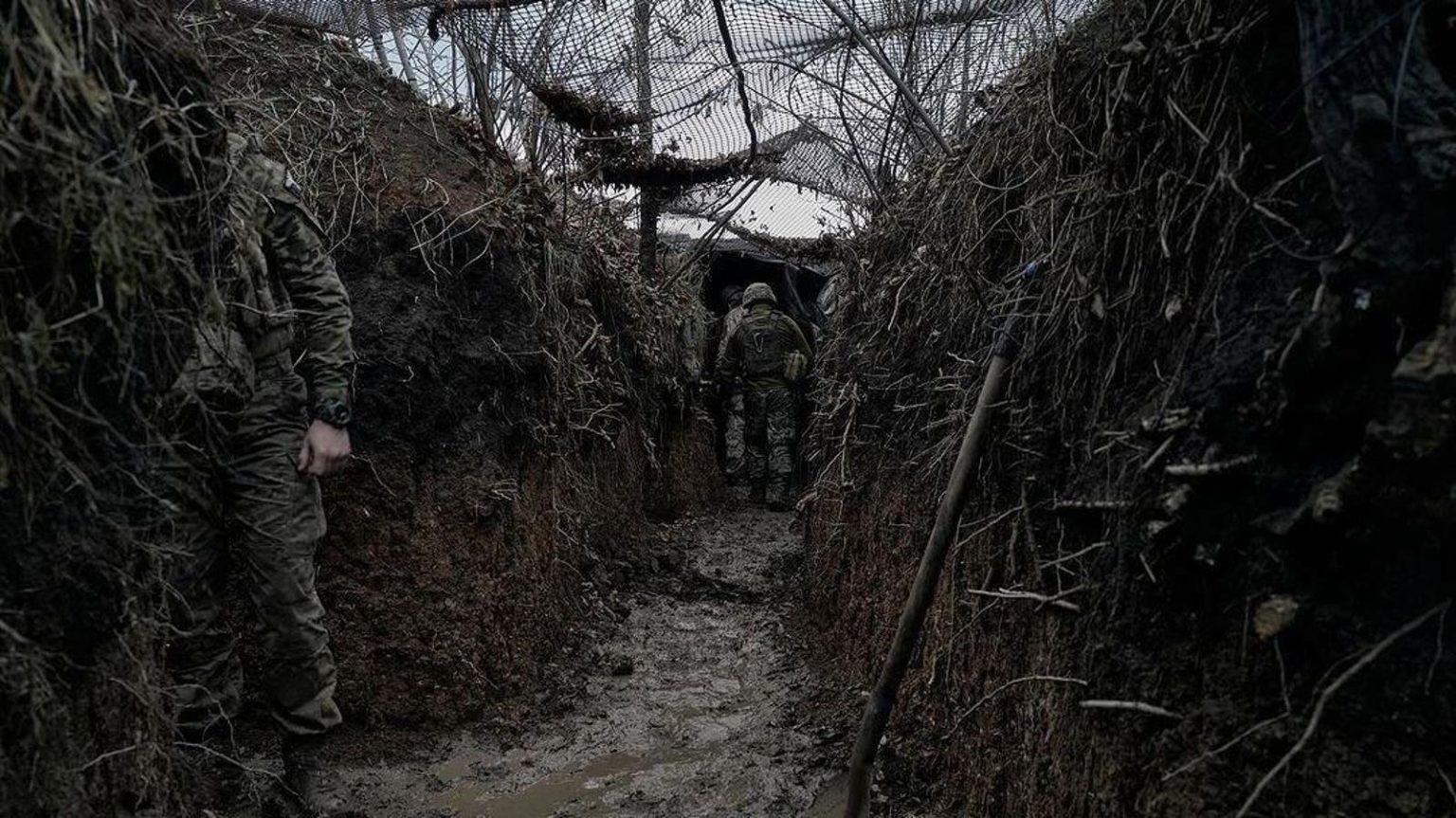Tiny drones—some hurling grenades, others strapped with explosives—are everywhere in Russia’s 22-month wider war on Ukraine. And the infantry on both sides know it.
Which is why they’re borrowing an innovation from their comrades in the Russian and Ukrainian armor and artillery corps, and adding anti-drone screens to their trenches.
Rob Lee, an analyst with the Foreign Policy Research Institute in Pennsylvania, helpfully has circulated images of these protections. A net over a muddy Ukrainian trench. Metal mesh blocking the door of a Russian dugout.
The infantry appreciate how dangerous tiny drones are. Especially the speedy, maneuverable first-person-view models. Consider the notable drone attacks from just the last few weeks.
A Russian drone team deploying FPV drones as trench-assault weapons, killing some of the Ukrainian infantry holding the trench and scattering the survivors.
A Ukrainian bomber-drone accurately flinging a grenade at one moving Russian tank and damaging it—then also bombing the tank the Russians sent to retrieve the immobilized first tank.
A Ukrainian FPV drone chasing down two Russian air-defenders speeding along on a motorbike.
A Ukrainian drone watching a Russian infantry squad take shelter inside a wrecked armored vehicle—and continuing to watch as a second drone, an FPV model, follows the Russians through the vehicle’s hatch before exploding.
Explosive drones “are everywhere,” said Samuel Bendett, a senior non-resident associate with the Center for Strategic and International Studies in Washington, D.C.
So of course drone-defenses are everywhere, too. “We are witnessing a lot of different defenses against drones and FPV UAVs—cope cages, slat armor, wooden logs and similar items,” Bendett added.
These defenses still are most common on vehicles. But perhaps not for long as the infantry seek cover, too. “Both sides are trying to adapt as quickly as possible to the ever-growing threat of FPV drones,” Bendett said.
Screens, nets and cages are anti-drone expedients, and strictly passive ones. Both the Russian and Ukrainian militaries understand that defeating drones means actively shooting them down—and also grounding them before they take off.
Which is why we’re seeing more and more improvised anti-drone air-defenses—machine guns on trucks, even shotguns in the hands of deft shooters. And why electronic-warfare troops are increasingly active on both sides of the 22-month-old war.
It’s worth noting that Ukraine’s most dramatic recent battlefield success, crossing the Dnipro River in order to establish a bridgehead in Russian-held southern Kherson Oblast, occurred only after Ukrainian electronic-warfare crews had jammed Russian radio channels and established a 15-mile-deep dead zone for Russian drones.
Until every infantry platoon on both sides of the war has its own air-defenses and jammers—an unlikely scenario, given how many thousands of platoons are deployed—the infantry will keep digging in, and erecting nets and screens. Anything to offer any protection against what now is an ever-present aerial menace.
Read the full article here





